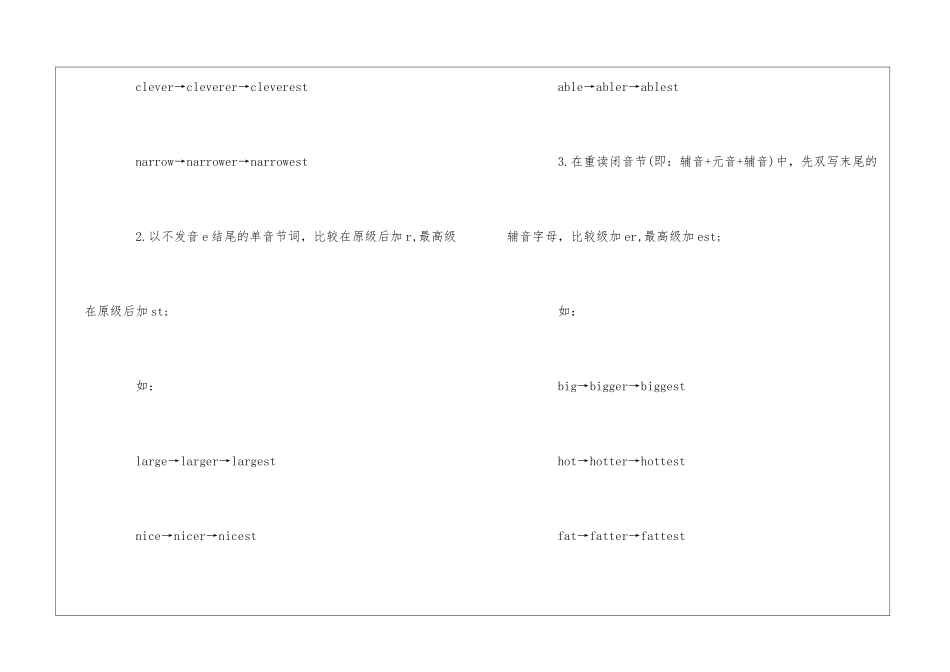高一英语知识点归纳小结之比较级和最高级的用法 高一英语知识点归纳小结之比较级和最高级的用法 一、形容词、副词的比较级和最高级的构成规则 1.一般单音节词和少数以 er,ow 结尾的双音节词,比较级在后面加 er,最高级在后面加 est; (1)单音节词 如: small→smaller→smallest short→shorter→shortest tall→taller→tallest great→greater→greatest (2)双音节词 如: clever→cleverer→cleverest narrow→narrower→narrowest 2.以不发音 e 结尾的单音节词,比较在原级后加 r,最高级在原级后加 st; 如: large→larger→largest nice→nicer→nicest able→abler→ablest 3.在重读闭音节(即:辅音+元音+辅音)中,先双写末尾的辅音字母,比较级加 er,最高级加 est; 如: big→bigger→biggest hot→hotter→hottest fat→fatter→fattest 4.以“辅音字母+y”结尾的双音节词,把 y 改为 i,比较级加 er,最高级加 est; 如: easy→easier→easiest heavy→heavier→heaviest busy→busier→busiest happy→happier→happiest 5.其他双音节词和多音节词,比较级在前面加 more,最高级在前面加 most; 如: beautiful→more beautiful→most beautiful different→more different→most different easily→more easily→most easily 注意: (1)形容词最高级前通常必须用定冠词 the,副词最高级前可不用。 例句:The Sahara is the biggest desert in the world. (2)形容词 most 前面没有 the,不表示最高级的含义,只表示“非常”。 It is a most important problem. =It is a very important problem. 6.有少数形容词、副词的比较级和最高级是不规则的,必须熟记。 如: good→better→bestwell→better→best bad→worse→worstill→worse→worst old→older/elder→oldest/eldest many/much→more→mostlittle→less→least far→further/farther→furthest/farthest 二、形容词、副词的比较级和最高级的用法 1.“A+be+形容词比较级+than+B”意思为“A 比 B 更……”。 如: This tree is taller than that one.这棵树比那棵树高。 注意: ①在含有连词 than 的比较级中,前后的比较对象必须是同一范畴,即同类事物之间的比较。 ②在比较级前面使用 much,表示程度程度“强得多”。 如:A watermelon is much bigger than ...


